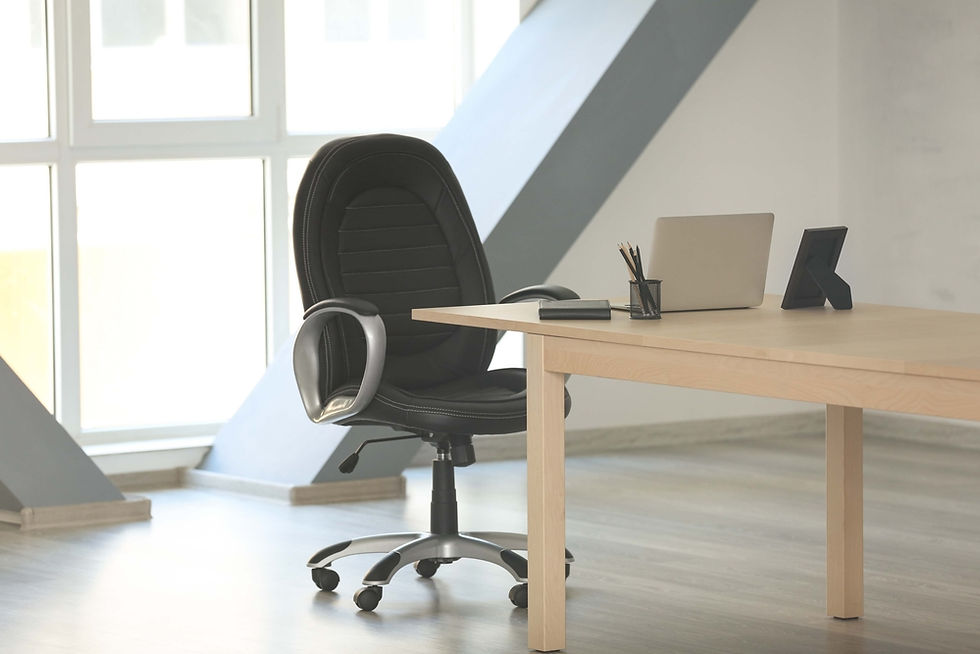
What Are the Consequences of a Bad Chair and Why Is a Good Office Chair Important?
A general working day is 9-5. If you work in an office you most likely spend a large portion of this time sitting in an office chair whether that be a good ergonomic chair or not. We have the tendency to round our shoulders and move our necks forward when sitting at our desks, answering phones, or typing on the computer. Without a good office chair to support our spine this can lead to increased stress in our spine and pelvis, which may lead to further back pain and injury.
The main answer for why a good office chair is important is comfort. If you feel more comfortable in your chair, this generally means your body is supported in its neutral position and you aren’t experiencing pain. However, a good office chair also reduces the pressure in your hips when seated for long periods of time, supports the natural curvature of your spine, drastically improves your posture, reduces back pain, and improves overall productivity. When you feel comfortable and do not experience back pain you will engage in your work more effectively and have less time off due to pain which is a win-win for both you and your boss. Furthermore, correct posture at work also has lasting effects in your day outside of work such as improved sleep, a better mood, improved circulation and digestion, and conservation of energy meaning you won’t feel as tired throughout the day.
What Should I Look for In an Office Chair?
There are many different office chairs available for use and not one specific type or brand is necessarily the best. However, there are a few “rules” when it comes to a comfortable working position which you should apply when choosing an office chair:
Angles to be at 90° - this includes your hips, knees, elbows, shoulders, and ankles
Ensure that your head is in an upright position when seated and looking at your computer monitor. To support your neck, you should have your eyes in alignment with the top third of your monitor.
Ensure that the chair allows your feet to be flat on the floor (or use a footrest if required). When your feet are not flat on the floor it places larger strain on your lower back and core, causing fatigue and lower back pain.
Ensure that your upper body is upright and your lower back is supported by the lumbar roll. Most ergonomic chairs have padding to support the lumbar curvature of your spine to reduce strain and pain when seated for long periods of time.
Ensure that your thighs are supported by the chair with no pressure caused by the front edge of the seat under the thighs. This optimizes blood flow to your muscles and reduces pressure and weight on the lower back.
Ensure the chair allows your elbows and arms to be close to your body and in alignment with the ASDF keys on your keyboard. This position allows your body to fall into the natural position by maintaining 90° angled armrests. Therefore, chairs with arm rests are not recommended as you will tend to lean on these, causing strain on one side of your back.
How Can Chiropractic Treatment Help Fix Consequences of Prolonged Bad Posture?
With current global events forcing more and more people to work from home, the home office setup is becoming a significant factor in postural-related pain and discomfort. Our profession is starting to see many new patients in our clinics with this presenting complaint. Repetitive and prolonged incorrect posture places unhealthy forces through the joints of the spine and if left untreated, may lead to chronic lower back pain, neck pain, and headaches. In addition to upgrading your office chair, Chiropractic spinal manipulative therapy can help a person improve and maintain proper posture by improving movement in the affected joints. Chiropractors are specifically trained to identify the postural and muscle imbalance in your body arising from a poor office chair. The cheap office chair, especially those found in a home have become a bigger problem than they once were. Furthermore, patients are finding themselves working at the family dining table and such chairs are only designed to eat a meal from, not spend a workday on.
After a holistic assessment, a Chiropractor will apply specific spinal adjustments to the targeted joints in order to improve joint function and reduce pain. These adjustments help the muscles to relax which may have been contributing to your pain. Specific strengthening and stretching exercises are often recommended to ensure correct posture is maintained in a range of activities throughout your day. With this combined approach, your body will slowly ease into a good posture without pain.
If you believe your office chair at work or at home is causing you pain and discomfort, speak with a Chiropractor to help combat this common problem.

Comments